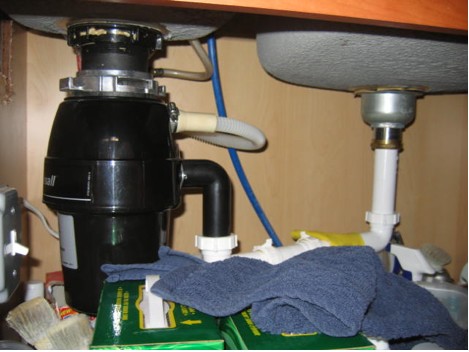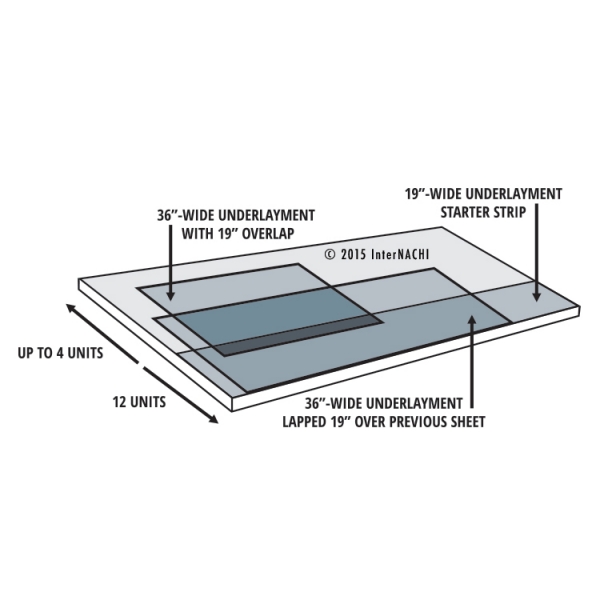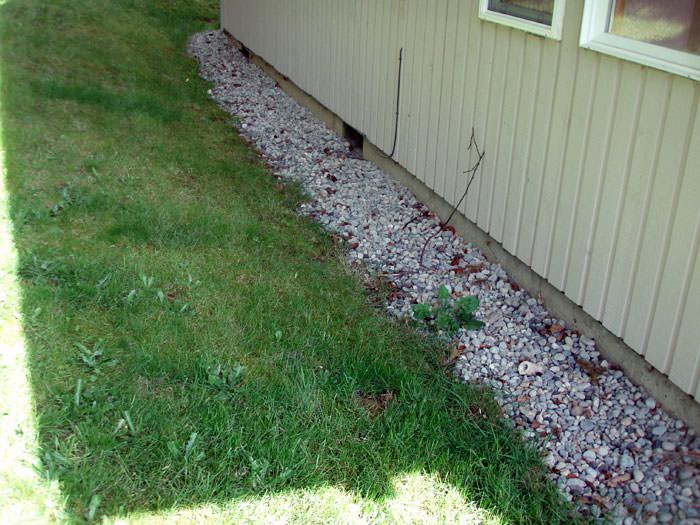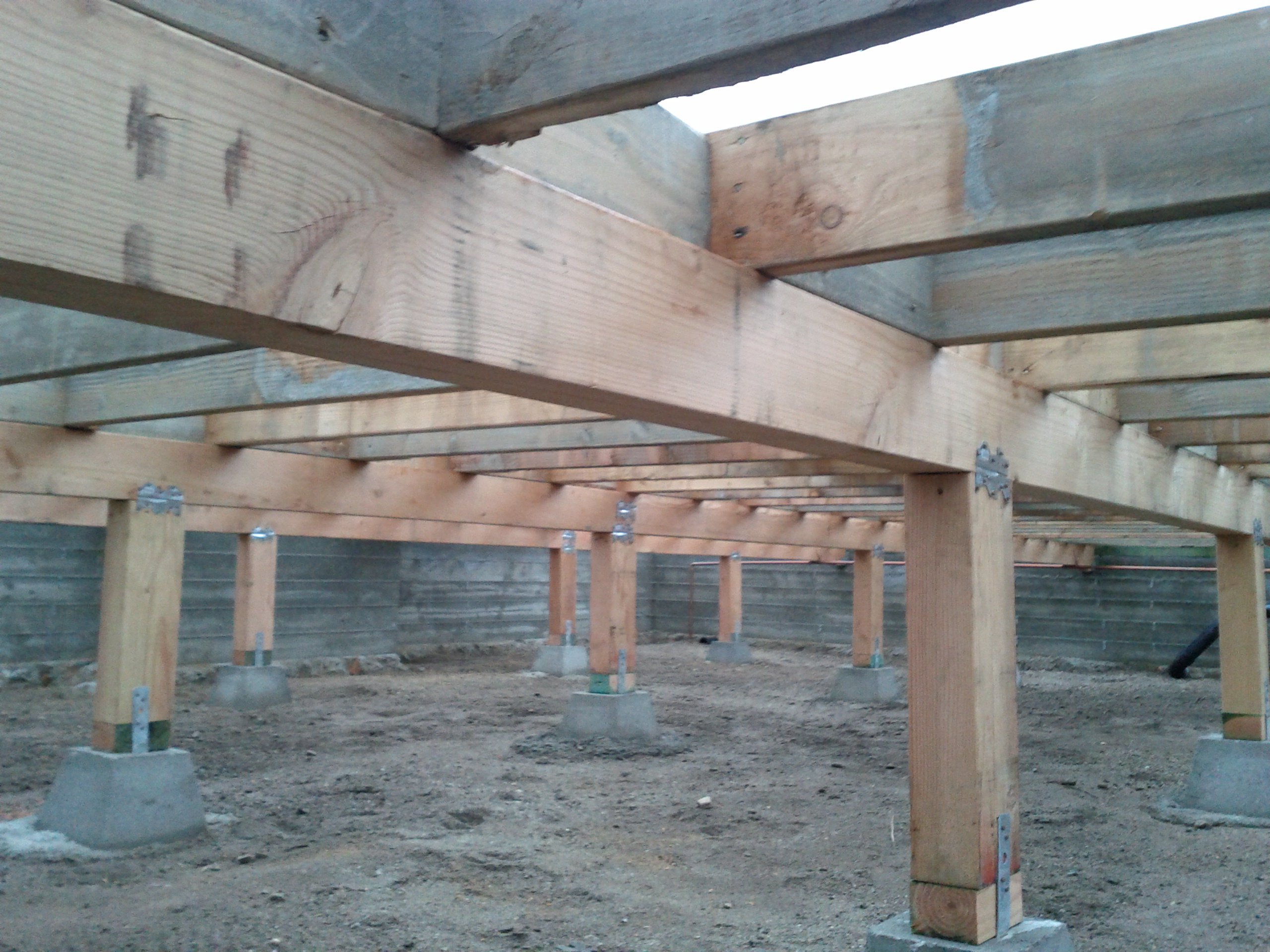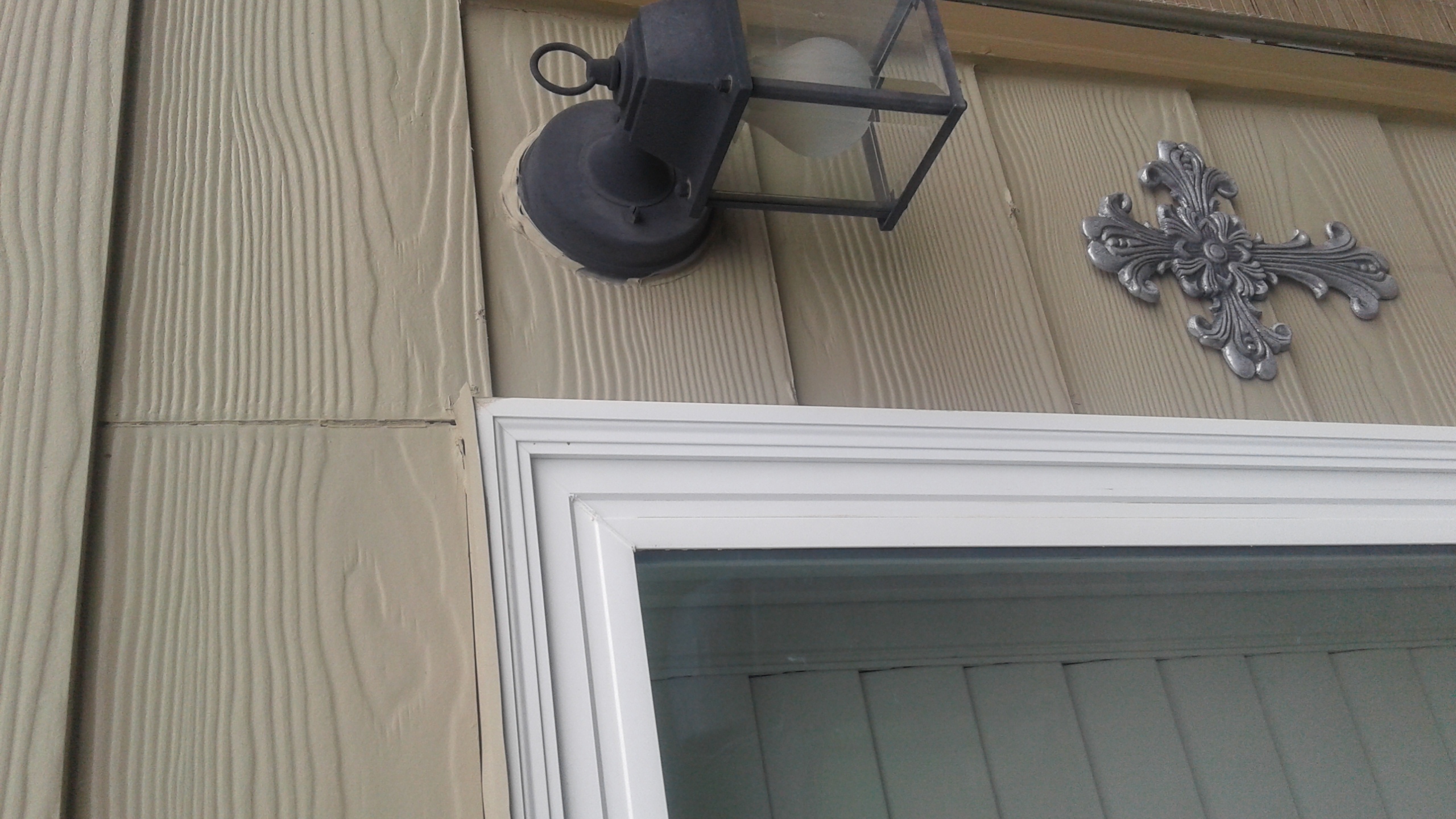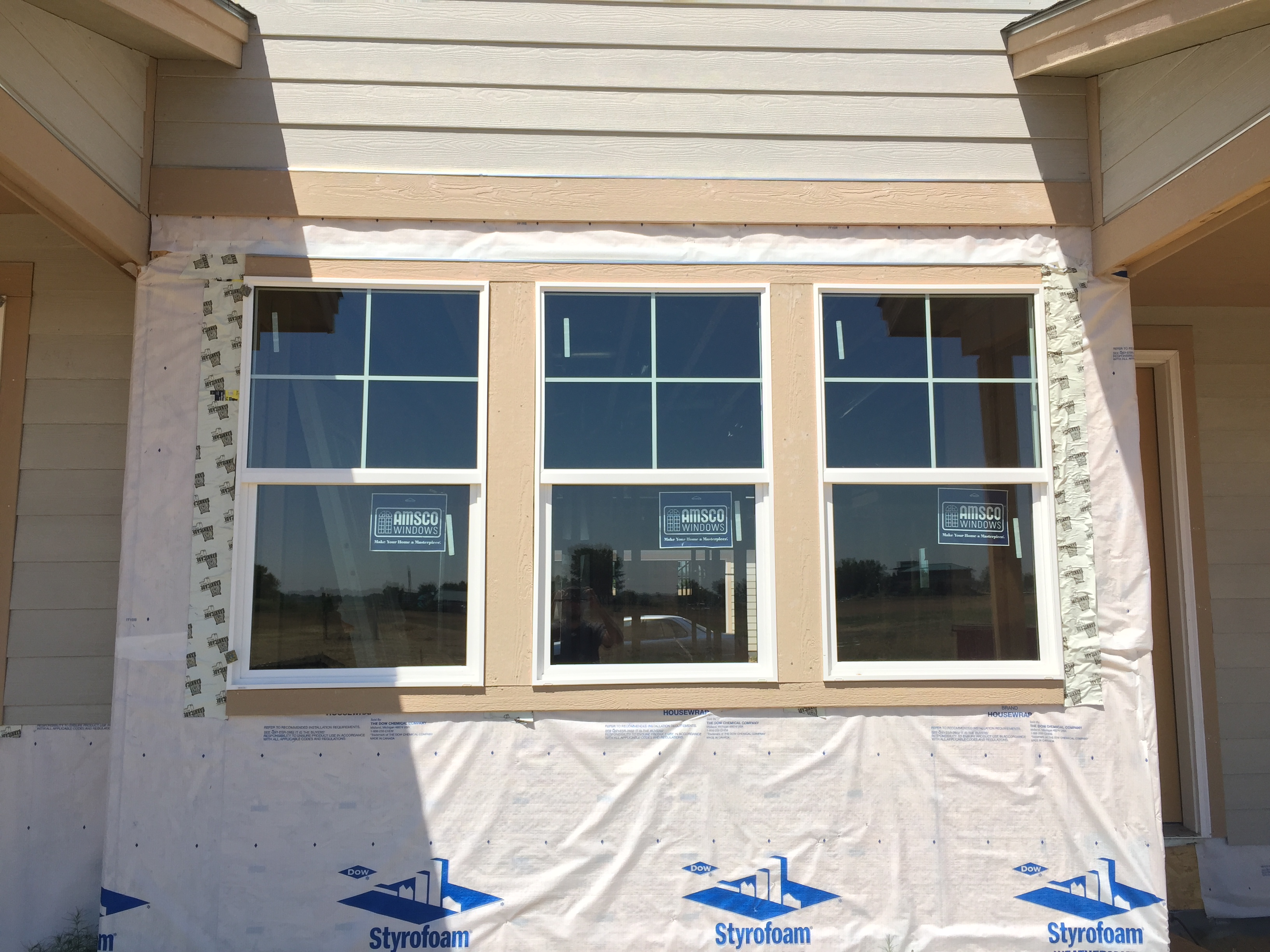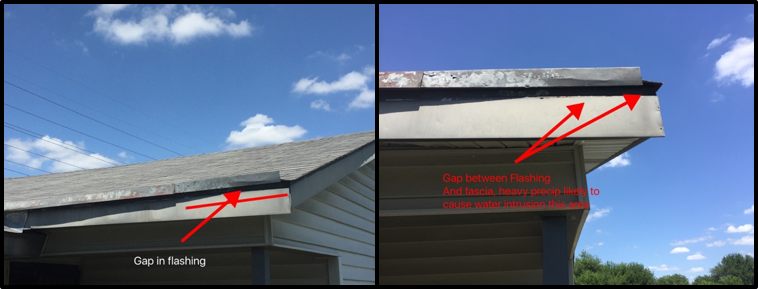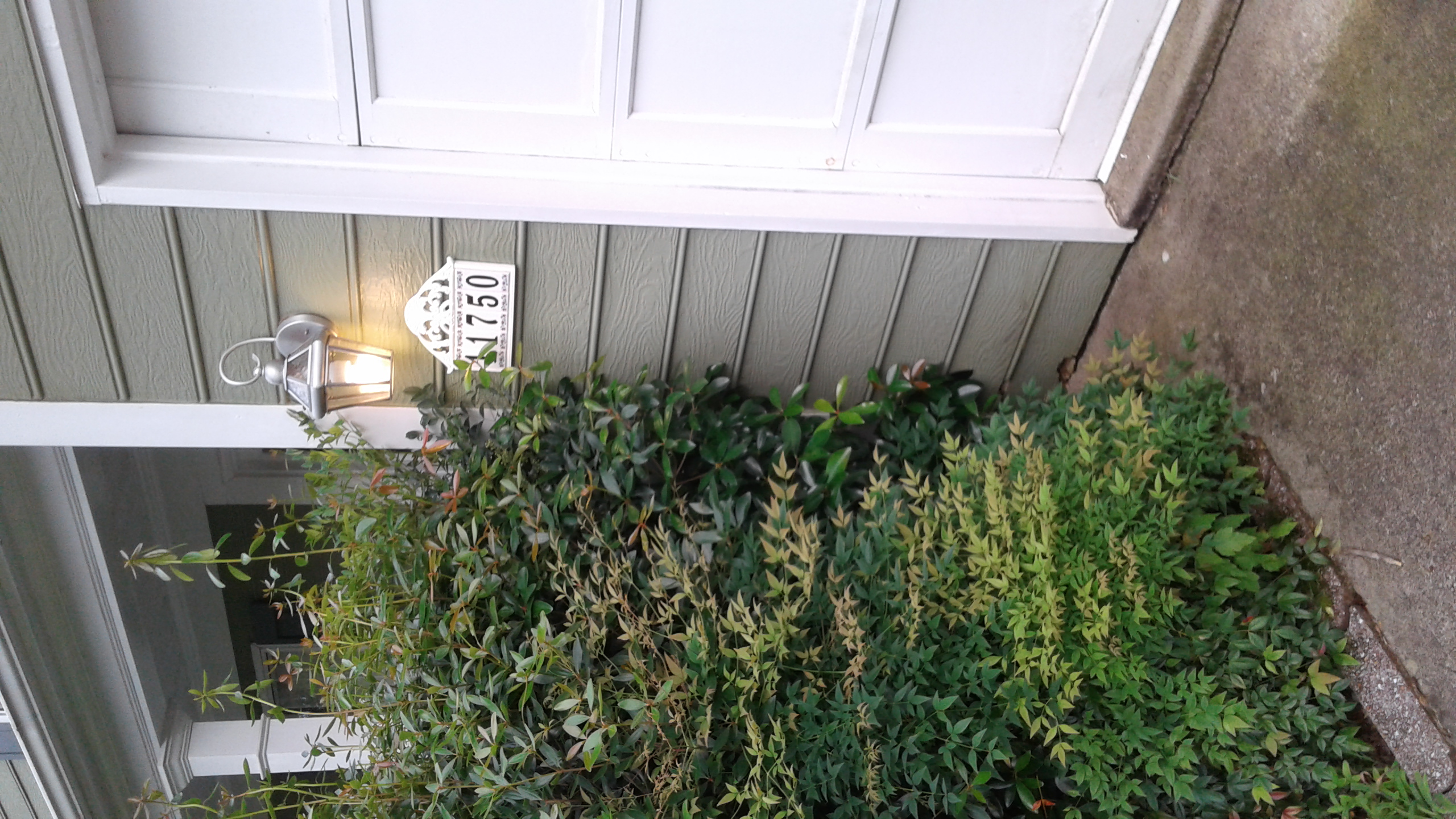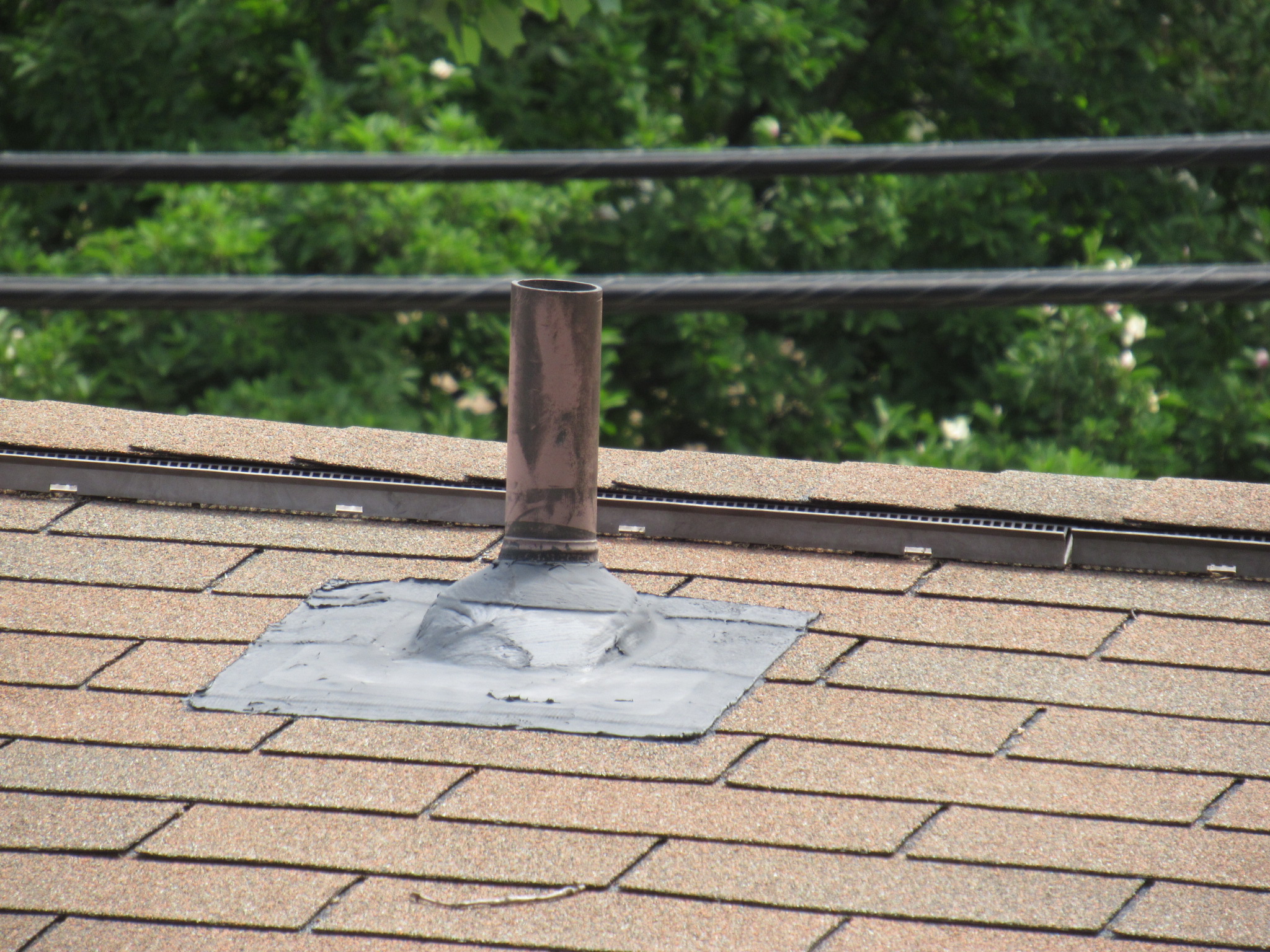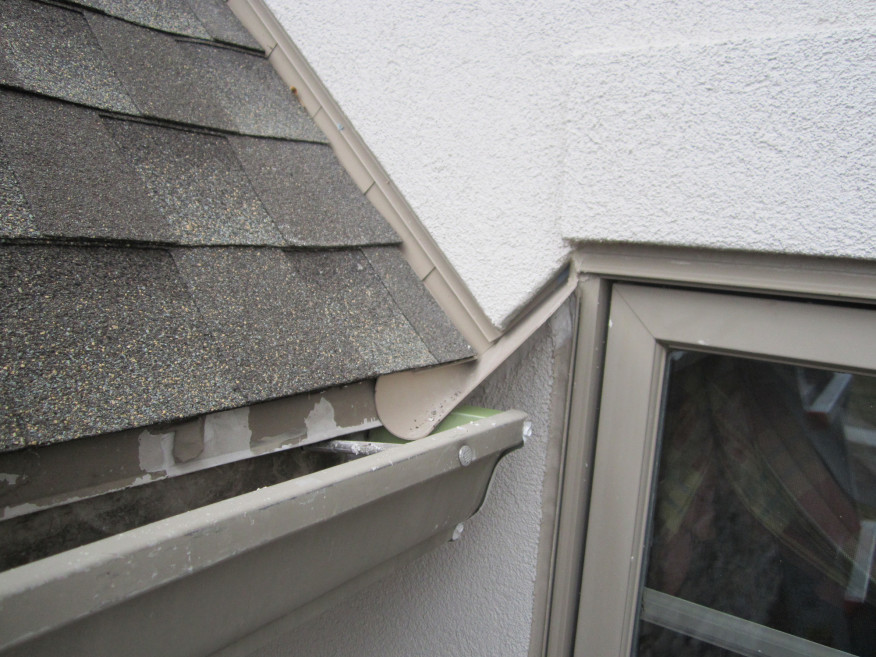Shown in the photo of a finished basement wall, it clearly illustrates all standards of practice to ensure the finished basement walls are properly water and moisture free. The rigid insulation and gypsum board are a key factor in keeping moisture and vapor from entering thr basement.
Understand Minimum Roof Slope and Check the Underlayment
Steep-slope roofs are water-shedding but not waterproof. Therefore, roof slope is limited in accordance with Table 1 above for various steep-slope roofing products. To prevent water leaks, these roof systems rely on fast drainage, adequate overlapping of elements, and use of underlayment as a back-up layer of protection. For composition shingles and concrete and clay tiles, Figure 1 below shows a double underlayment detail to be used on slopes of less than 4:12 for these two types of roof coverings.
For roof slopes between 2:12 to 4:12 , underlayment should be two layers applied in the following manner:
A 19-inch strip of underlayment felt should be applied parallel to and starting at the eaves, and fastened sufficiently to hold in place. Starting at the eaves, 36-inch-wide sheets of underlayment should be applied, overlapping successive sheets at 19 inches, and fastened sufficiently to hold in place.
For roof slopes of 4:12 and greater:
One layer of underlayment should be applied in shingle-like fashion. It should start from the eaves and run parallel to the eaves. It should overlap 2 inches. It should be fastened sufficiently to hold in place. End-laps of the underlayment should be offset by at least 6 feet.
In areas where there is a history of ice forming along the eaves causing a backup of water, an ice barrier that consists of at least two layers of underlayment cemented together, or of a self-adhering polymer-modified bitumen sheet, shall be used in lieu of normal underlayment, and extend from the lowest edges of all roof surfaces to a point at least 24 inches inside the exterior wall line of the building.
By contrast, low-slope systems are designed as waterproof roof systems and use roof coverings designed for slopes as low as 1/4:12. While low-slope roofs are commonly known as flat roofs, an actual flat roof surface is a design mistake. There should always be some slope.
Inspectors should report a flat roof that is actually flat as being defective.
Forms of Inspection Business Ownership & Structure
SOLE PROPRIETORSHIPS
The vast majority of inspection businesses start out as sole proprietorships. These firms are owned by one person who has responsibility for running the business. Sole proprietors own all the assets of the business and the profits generated by it. They also assume complete responsibility for its liabilities and debts. Advantages of a Sole Proprietorship:
It is the easiest and least expensive form of ownership to organize.
Sole proprietors are in complete control and, within the dictates of the law, may make decisions as they see fit.
Sole proprietors receive all income generated by the business to keep or re-invest.
Profits from the business flow through directly to the owner’s personal tax return.
Disadvantages of a Sole Proprietorship:
Sole proprietors have unlimited liability and are legally responsible for all debts against the business. Their business and personal assets are at risk.
Owners may be at a disadvantage in raising funds and are often limited to using funds from personal savings or consumer loans.
Owners may have a hard time attracting high-caliber employees or additional inspectors, and those who are courted are motivated by the opportunity to own a part of the business.
Some traditional employee benefits, such as owner’s medical insurance premiums, are not directly deductible from business income (and only partially deductible as an adjustment to income).
This picture shows an all too common problem of inadequate site drainage. In this case there was no French drainage system observed. Likely there will be evidence of moisture intrusion on the inside walls on the foundation along this side of the structure in the form of efflorescence. The band of rocks against the foundation are nice to have but insufficient to keep the potential amount of deflected rain water coming off the roof.
I just learned what proper roof ventilation in vaulted ceilings looks like. There needs to be an air space above the insulations and below the roof sheeting. Air enters this space through openings/vents in the eaves and exists at the top/ridge of the roof through roof vents.
This foundation shows good practice of placing loose gravel under the footings. This will help with moisture slowly traveling up the porous concrete and wood. This crawl space should be completed with a plastic vapor barrier, this will further protect the home from rain water run off from the surrounding yard.
An ounce of prevention goes a long way, taking the necessary steps to prevent moisture damage is so important. The proper sealant during construction to regular home maintenance as an owner will save time and huge amounts of money when concerned about moisture in a home. Cutting corners really isn’t an option, when you see the kind of damage water can make.
Here is a properly flashed window and light that is properly sealed for preventing moisture intrusion. These steps are critical to prolong the life of your home, and will save you a great deal of time and money, and can make selling your moisture-free home a pleasant experience for you and the buyer!
Smoke alarms are an absolutely vital compenent to have in your home. Never disconnect them, and be sure to check every six months; I use daylight savings time as my reminder to change batteries and test the unit. It is to be noted if there is no smoke detector on any floor of the home being inspected.
This is a picture of a window installation in new construction near my house. I can see that flashing has been installed on the sides and on top, however I cannot confirm if there is flashing on the bottom which extends into the sill due to being covered by the weather resistive barrier and wood trim. The weather resistive barrier appears to flap over the top flashing. I see there is also non-corrosive flashing above the wood trim extending the entire length. This window appears to be installed in a manner that resist moisture intrusion.
“Inspecting Manufactured Stone for Water Damage”. This article discussed the importance of inspecting stone veneer for water damage. If manufactured stone veneer is installed incorrectly it can cause damage from water penetration, even over a short period of time. Improper flashing and drainage behind the veneer is often the cause of water damage. Since there is no air space behind this veneer, it is important to have everything behind it installed and sealed up well. It’s important for weep screeds to be installed and for the veneer not be in contact with the ground or roofing materials. Proper installation is key to manufactured rock veneer to avoid any water damage.
Without having full access to the roof, it was noted the flashing attached to the fascia had separated from the fascia, leaving a large gap. It appeared to be an area where water intrusion would be a factor and needs to be re-mounted.
I read the article on moisture intrusion and it’s implications by Gromicko and Kenton Shepard. Notably, they mentioned the seriousness of mold and the sickness it may case – this is a true statement. Interestingly though, they did not mention one of the more serious instances where a bevy of people became ill by exposure – legionaires disease.
Here is a picture of what happens when bushes and vegetation is allowed to stay in contact with the house. You can see the wood siding rot at the bottom of the photo. There is no other rotted siding on this house because this is the only place the bushes are allowed to contact the house
Saw a picture of a damaged chimney. Chimneys are the worst area for moisture intrusion on a house IMO. The combination of ill fitted flashing, faulty crickets and the sun deteriorating the paint faster than other places makes rotten siding and moisture intrusion more likely.
This photo from a recent inspection shows incorrect flashing at a roof vent. The flashing is sitting on top of the shingles and is sealed with caulking of some time. It is not clear why this flashing was installed this way, or when it was done, because all of the other vents were flashed properly. Regardless of why it was flashed this way, it needs to be repaired properly, and if not repaired it will need to be monitored closely for any signs of deterioration of the sealant.
Weve seen valiant attempts to extend the downspout discharge away from the foundation, by simply laying corrugated pipe on top of ground, which slopes back to the foundation, without addressing the basic grading issues. It is important to note that 1) water does not generally run uphill very well through corrugated pipe (some water will move through the pipe, while a substantial amount will just escape through the unsealed joints at the downspout) and 2) water that does discharge make it to the end of the corrugated pipe away from the foundation will tend to run back downhill to the foundation.
Kickout flashing is one of the simplest and least expensive moisture control methods for your home. Yet this is one of the most overlook, missed, or improperly installed flashing system seen on homes. A small bent piece of metal to divert water away from the roof to wall intersection at the gutter is something you should look at on every home.
I had no idea Acid Rain was still up for debate regarding the causal effect and the role manmade systems play in the creation and expansion of this system. The main components of acid rain are sulfur dioxide (SO2) and nitrogen oxide (NOx),combine with such as volcanoes and decaying vegetation.
Carrying out an inspection on the condition under the kitchen sink. There are no signs of leakage found. All the connecting pipes are looking nice and dry. There are no drips at the faucet or in the trap under the sink.
